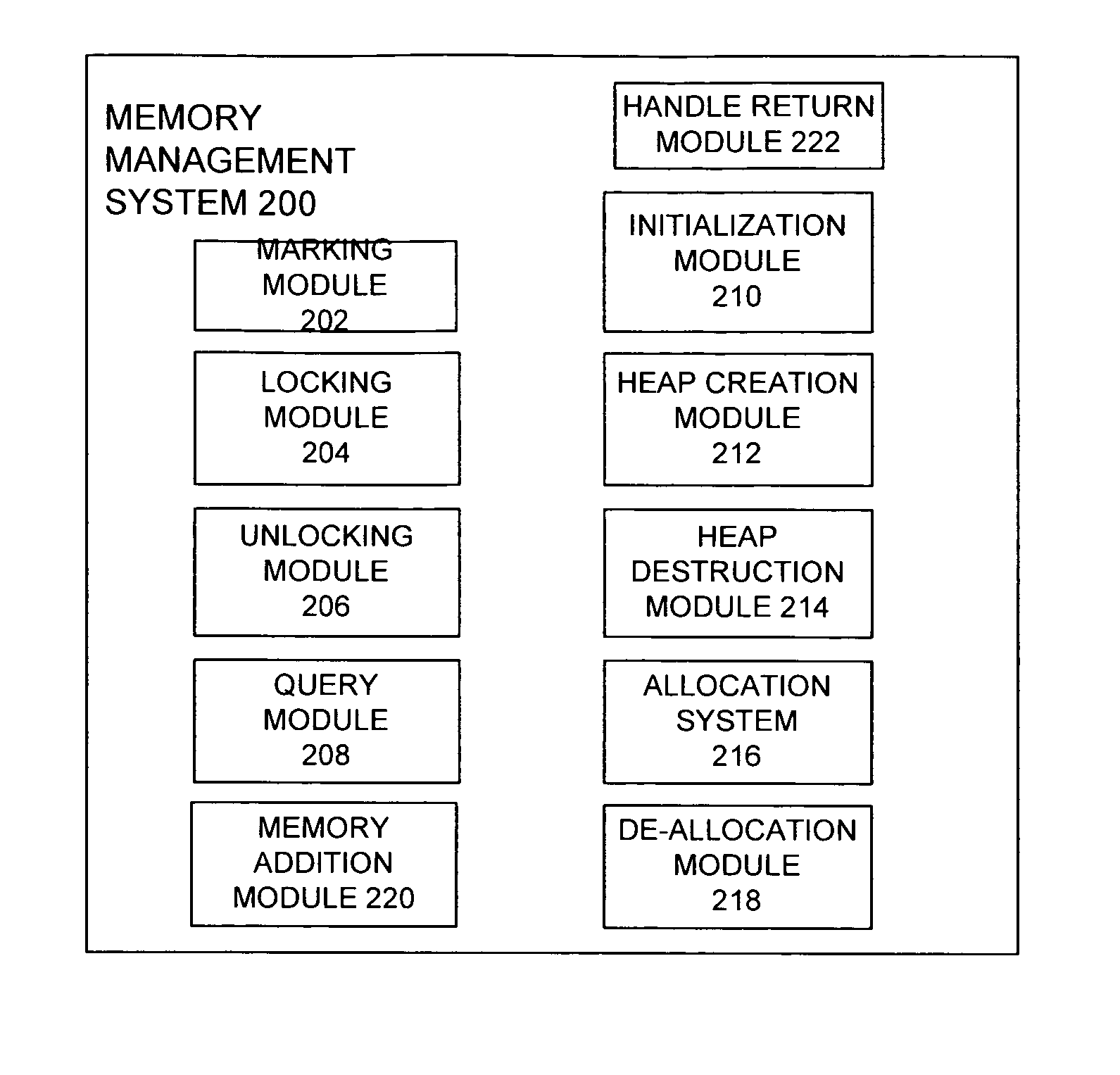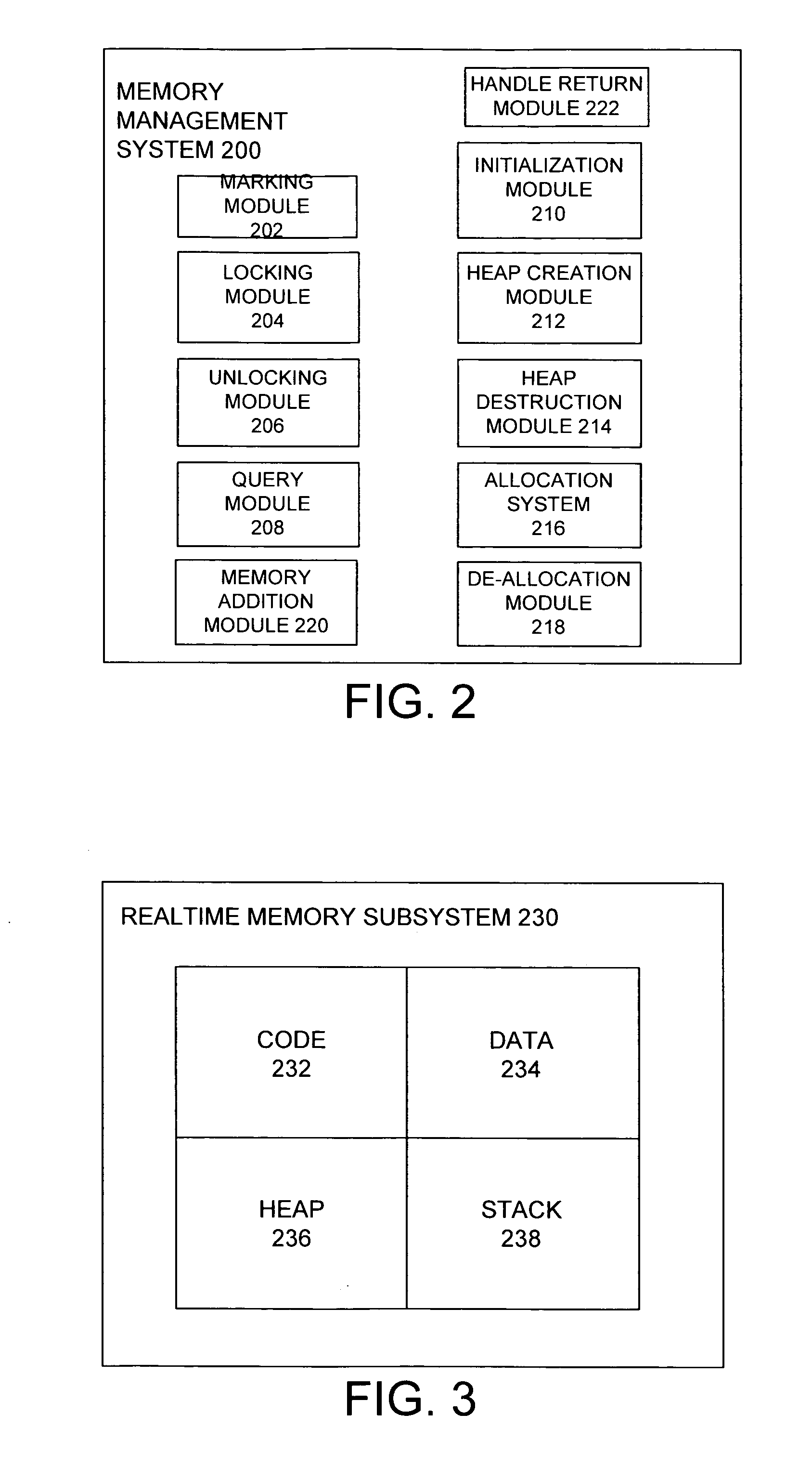System and method for memory management
a memory management and system technology, applied in memory adressing/allocation/relocation, program control, multi-programming arrangements, etc., can solve the problems of application failure to complete required processing in time, memory becomes scarce, poor performance, etc., to minimize memory access latency
- Summary
- Abstract
- Description
- Claims
- Application Information
AI Technical Summary
Benefits of technology
Problems solved by technology
Method used
Image
Examples
Embodiment Construction
Overview
[0021] Embodiments of the present invention are directed to a system and method for managing memory in order to improve memory access during realtime processing. The system and method provide in one regard a solution that locks down essential memory for running realtime code. However, in any program, there will be parts that need to run realtime, as well as other parts that do not require the same responsiveness. Therefore, a mechanism is provided for identifying which memory should be locked and which should not. Furthermore, locking may be selectively implemented at chosen times such that a memory lock is not always required.
[0022] The system of the invention enables software developers to identify what code, data, constants, and stack need to get locked down when running realtime. The system also provides a mechanism for locking down all the identified memory in a process, as well as for unlocking all the identified memory. Accordingly, developers are able to mark thei...
PUM
 Login to View More
Login to View More Abstract
Description
Claims
Application Information
 Login to View More
Login to View More - R&D
- Intellectual Property
- Life Sciences
- Materials
- Tech Scout
- Unparalleled Data Quality
- Higher Quality Content
- 60% Fewer Hallucinations
Browse by: Latest US Patents, China's latest patents, Technical Efficacy Thesaurus, Application Domain, Technology Topic, Popular Technical Reports.
© 2025 PatSnap. All rights reserved.Legal|Privacy policy|Modern Slavery Act Transparency Statement|Sitemap|About US| Contact US: help@patsnap.com



